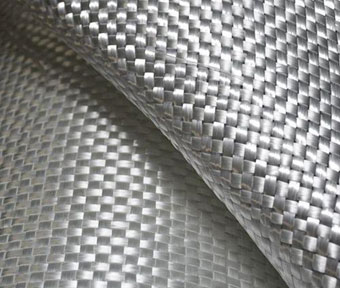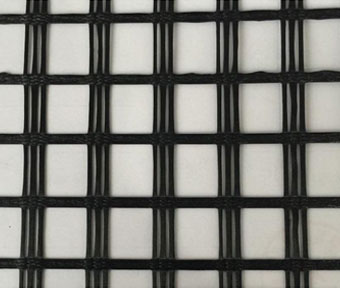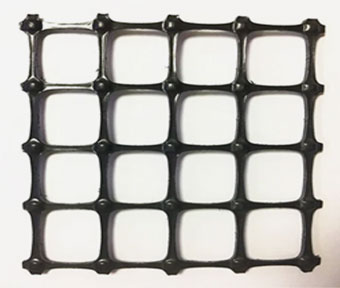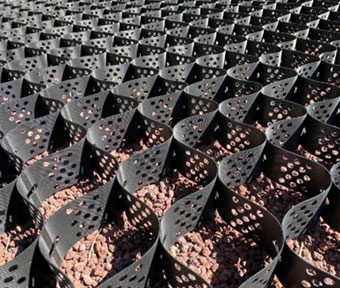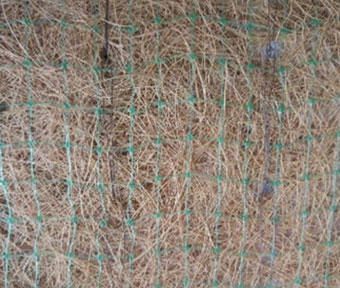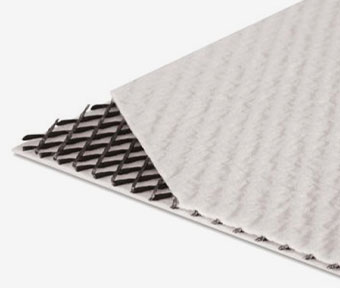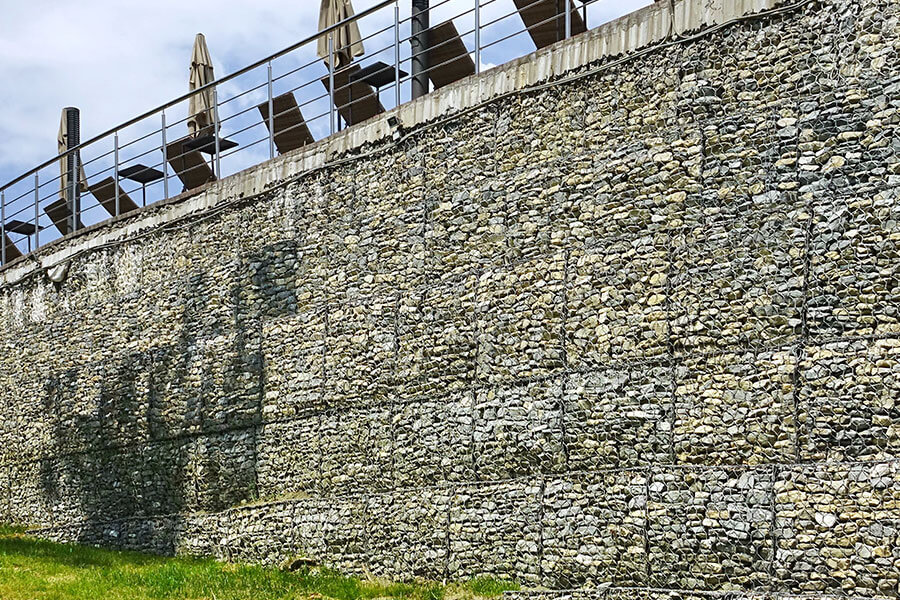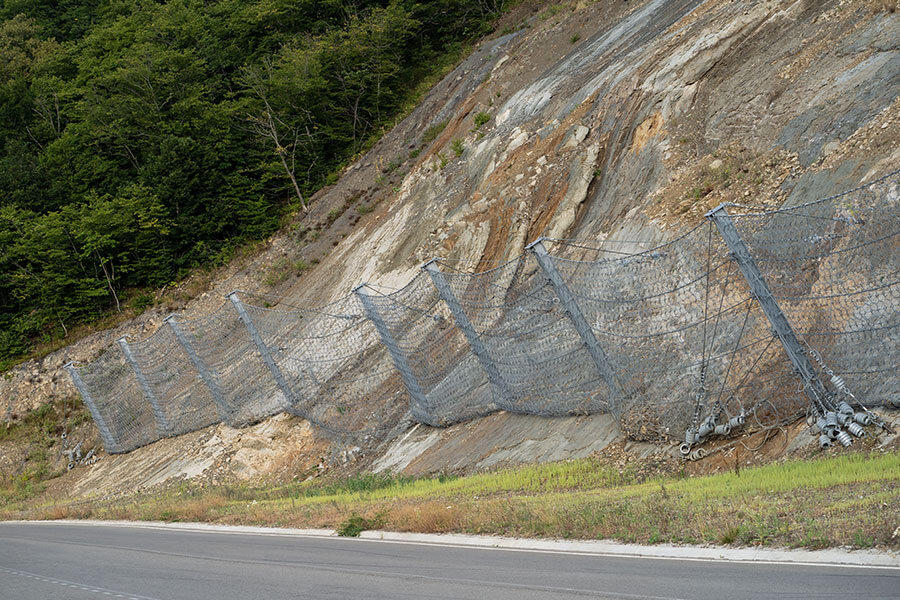- Home
- /
- Applications
- /
Infrastructure -Roads, Railway, Runways
Infrastructure -Roads, Railway, Runways
Geosynthetics are successfully used to fulfil a number of functions that contribute significantly to the good performance of roadways, railways and runways. They include the functions of separation, filtration, reinforcement, stiffening, drainage, barrier, and protection. One or more of these multiple functions have been used in at least six important roadway applications.
The applications include the migration of reflective cracking in asphalt overlays, separation, stabilization of road bases, stabilization of road soft subgrades, and lateral drainage.


Indeed, a major cause of failure of roadways constructed over soft foundations is the contamination of aggregate base material with the underlying soft subgrade soil. A geosynthetic layer is placed between two layers of soil with different particle-size distributions. A geosynthetic placed between the aggregate and the subgrade can act as an effective separator by preventing mixing of the subgrade and aggregate base course and maintains layer thickness as required and result in significant cost savings over the design-life of the Road / Railway.
Products Used

Base/ ballast stabilization is defined as the application where geosynthetics are used to maintain the stiffness of the base aggregate materials. Stiffening is the primary (and sole) function leading to decreased lateral displacements within (and increased confinement of) the aggregate-geosynthetic composite. Therefore, when geogrids are used to stabilize a road base, the geogrid aperture and base material particle sizes should be properly selected. On the other hand, when geotextiles are selected for base stabilization, proper interface frictional capabilities should be provided. When geogrid used in combination with geotextile result in significant cost savings over the design-life of the Road / Railway.
Subgrade stabilization is defined herein as the roadway application involving the use of geosynthetics to increase the bearing capacity of soft subgrade soils. The functions of reinforcement, stiffening, separation, and filtration are involved in this application. Among these multiple functions, the reinforcement function leads to an increased bearing capacity of soft foundation soils while the stiffening function contributes to decreased lateral displacement within the base.
Products Used

When soil strata are very poor then ground improvement is recommended to improve the engineering properties of the soil mass which is treated to meet project performance requirements. Depending on depth of weak soil strata whether it is shallow or deep. One can use different types of ground improvement methods.
Geosynthetics used for increasing bearing capacity and permeability of soil, reducing settlement of soil. Biaxial Geogrids or Triaxial Geogrids are used for ground improvement in locations where shear stresses are generated because shearing stress between soil and reinforcement restrains the lateral deformation of the soil. Along with geogrid, Nonwoven geotextile is used for separation so that layer thickness is maintained and drainage is efficient.
Geocell can substantially increase the bearing capacity and reduce settlement of the clay sub grade with void. It is proved that the overall bearing capacity of the foundation bed increases with increase in density of the fill soil. It is therefore profitable to have a dense fill in the geocells.
Along with geocell, Nonwoven geotextile is used for separation so that intermixing of strong and weak is prevented hence layer thickness is maintained and as well as for efficient drainage.
Note- The bearing capacity of soil improved when reinforced by geosynthetics and that better improvements were obtained when the reinforcement is placed within a certain depth (or influence depth)
PVDs replaced conventional sand drains for faster consolidation in soft compressible/slow draining sub-soils (by shortening the drainage path of the pore water from a low permeable layer to free water surface or to pre-installed drainage layer, thereby accelerating the rate of consolidation and associated settlement), due to their easy & speedy installation.
PVD is reduces consolidation time & associated settlement and To increase bearing capacity/shear strength of sub-soil.
Products Used

Bridges can be drastically impacted as a result of scour, which is why it is one of the most common causes of bridge failure around the world. Bridge scour aprons designed to protect super-structures against the undermining action of river or sea water.
Gabion aprons will closely follow the changing contours of the bed as scouring progresses, until eventually the erosion is completely sealed off. Stone filled gabion models proved the most effective overall at reducing local pier scour, mainly due to the greater weight of the gabion.
Gabions are out most important due to its cost effectiveness, ecological aspect, durable and less time-consuming during construction, economical and eco-friendly.
Products used

On embankments, there is the elevated risk of erosion. It is essential to put as much effort as possible into actions that will stop the soil from washing away. It could take decades to rebuild even the initial layer of topsoil, so it essential to have some insight on how to keep topsoil in place.
Jute fabric or coir mat is used to minimize the effects of water erosion on slopes and embankments. Rolled mats are usually made from mulch that is held together by a fibre mesh. They degrade slowly, allowing vegetation that may have been grown in the area to grow and take over the job of protecting the soil from erosion when the mats have finally degraded completely.
Geocell is used to reinforce the upper slope soil and stabilize the slope. Geocell is used to resist sliding, prevent severe erosion caused by surface runoff, and allow steeper slopes to be built. Slope Erosion Control for geomembranes on dams, landfills, and containment basins with our only complete geocell solution featuring the tendon and J hooks support system.
Geocell on slopes can be filled with vegetative soil for vegetation growth or filled with permeable aggregates or filled with concrete.
Products used

When roads are constructed over very wet and poorly drained soils which results, you might have seen that the road surface is constantly breaking up and failing resulting in potholes.
Layer of geosynthetic need to be installed within pavement layers to improve planar drainage allows water relieved the drainage pressure and provided a long-term solution to the ongoing problem.
GTI® 3D Geo-composite DRAIN Sheet has multidirectional flow allows a continuous path for water discharge, eliminating the potential for hydrostatic pressure build-up, which increases service life of road pavement. It can be used to engineer efficient and economic solutions by minimizing natural aggregate thereby reducing carbon footprint on the environment.

